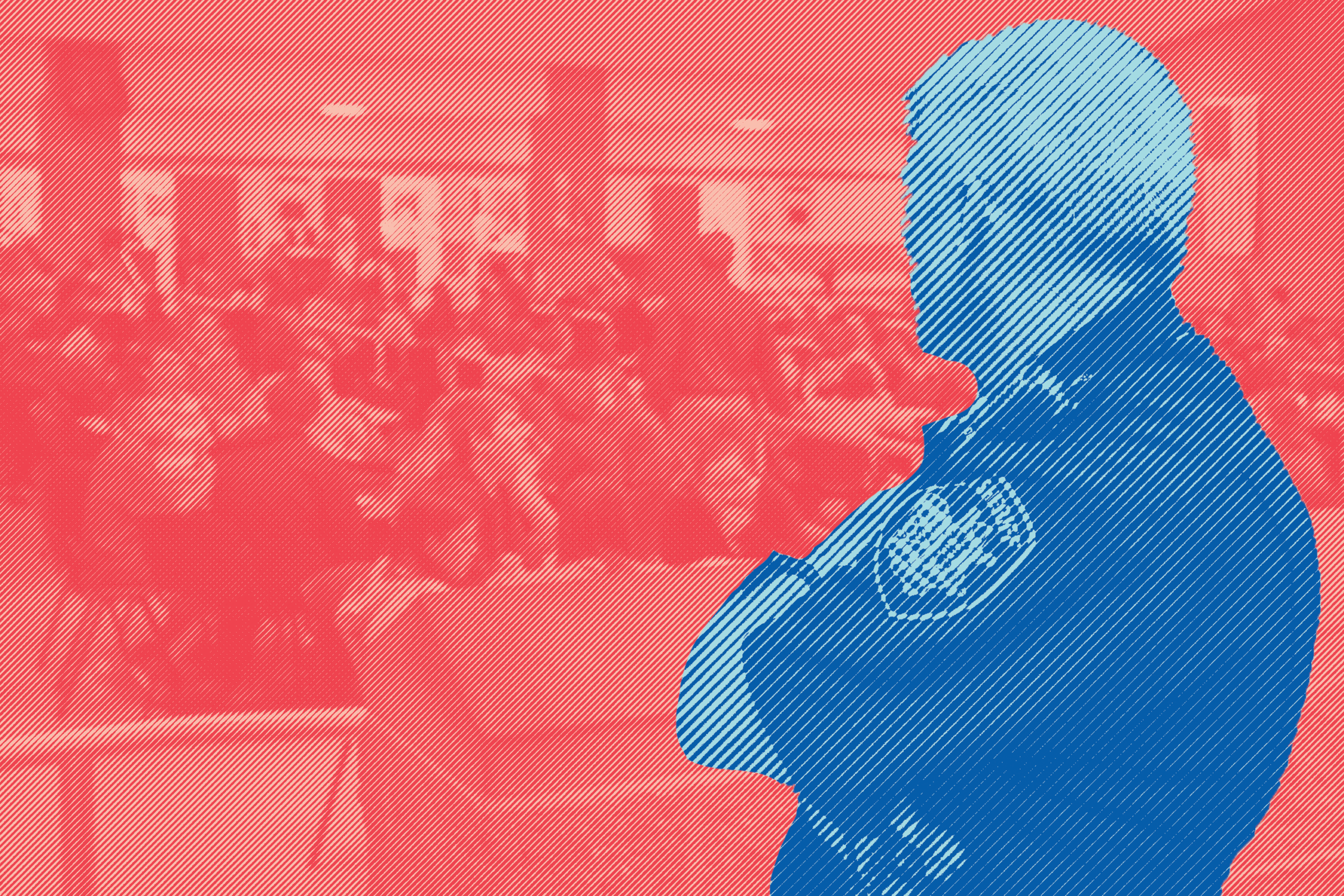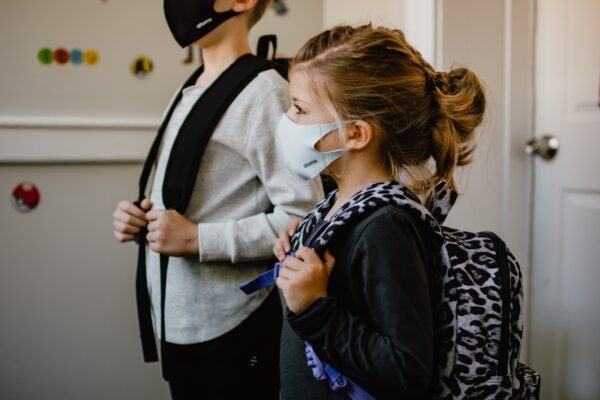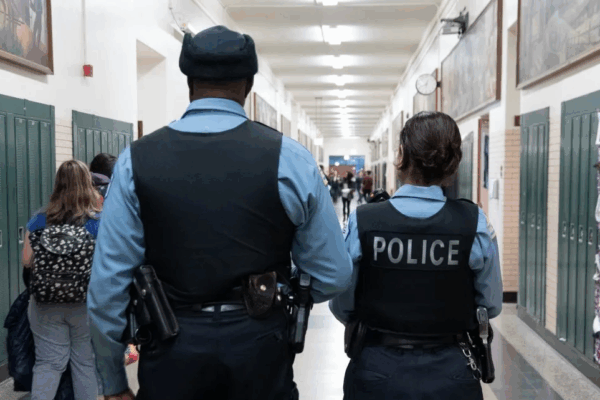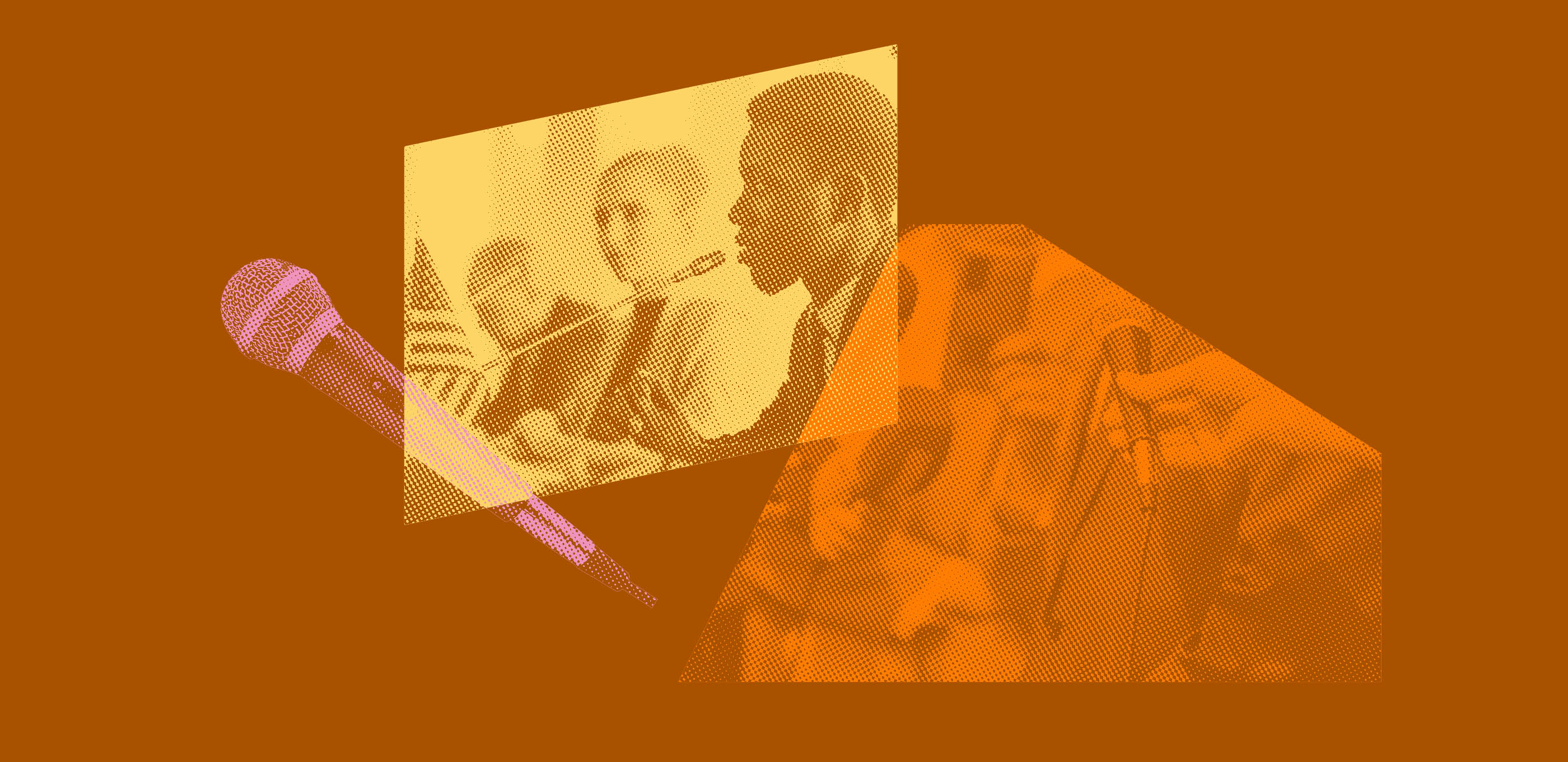Advocating for Police-Free Schools in Iowa Toolkit

It's become common for schools to bring in police officers, usually armed, to patrol and interact with students. The stated goal is often to keep students safe, but there is no conclusive evidence that full-time police presence in schools increases student safety or prevents mass shootings. Instead, expert research shows that police in schools create real harm for many students, especially students of color and students with disabilities.
Some school districts, in the wake of the George Floyd murder, including Ames and Des Moines, have discontinued their SRO programs, citing inherent racial inequities in such programs. But after the Perry school shooting, a handful of other districts have added them, incorrectly equating having an armed officer on site as preventing such tragedies. (Multiple schools that have experienced mass school shootings had armed SROs on site.)
The data also challenge the claim that SROs are a good "friend" or "mentor" for students who can teach about "healthy relationships." SROs are sworn police officers who can arrest you, your family members, or your friends after you are urged to confide in them. And lessons on healthy relationships are best left to teachers, counselors, school psychologists, nurses, and social workers—not someone standing in front of you with a gun.
We all want students to be safe from physical threats, and understand that students must both be and feel safe in order to truly learn. We also know that physical safety is only one part of student well-being. In order to create safe and successful schools in Iowa, every student needs not just physical safety, but a supportive learning environment and emotional and mental health support when they need help. In a time when many students are struggling to adjust after the trauma and disruption of school closures, social isolation, family economic hardship, and family loss or illness during the early months of the COVID-19 pandemic, holistic conversations and plans to create school safety are even more important.
Creating safe school environments for all students is a complex and ever-evolving goal, both in Iowa and across the country. One step that school districts in our state can and should take to move closer to this goal is ending full- or part-time armed police presence in schools.
Even though school safety is often the stated goal of school districts, research shows that having embedded police officers patrol their hallways does not actually make students safer. Instead, it leads to greater student alienation and a more threatening school environment. This is true even in the purely physical sense, as there is no conclusive evidence that police presence in school buildings reduces crime among students or prevents mass shootings.
Regardless of how well-intentioned they may be, armed police officers in schools create an environment more focused on law and order than on students’ social and emotional well-being. When working in school buildings, police do exactly what they are trained to do—question, detain, handcuff, and arrest. They treat youth like potential criminals instead of students, especially students of color and students with disabilities, feeding a school-to-prison pipeline and creating criminal records that follow students around for the rest of their lives. And criminal records make lifelong access to housing, employment, and social services much more difficult.
After George Floyd was murdered in May 2020, school districts around the country began reconsidering having local police officers working in their buildings as part of a nationwide reckoning with racial disparities in U.S. policing practices. These disparities carry over into school policing as well, with the school arrest rate of Black students being 3 times that of white students nationally according to a 2019 ACLU report. In Iowa, this disparity is even worse, and Black students are 7.7 times more likely to be arrested than white students according to the most current federal civil rights data.
In light of these disparities, both Des Moines Public Schools and Ames Community School District ultimately ended their school resource officer (SRO) programs in 2021. This shift in the school policing landscape occurred because students, parents and caregivers, educators, and other community members shared their experiences with police in schools and pushed their district administration to consider the facts.
This toolkit is designed for youth, parents and caregivers, educators, and other community members across Iowa who want schools without police and are wondering how to make that happen. It provides resources to begin the conversation around the impact of police presence in your school, and eventually transition to a school culture that is safe, supportive, and does not require police.
Inside, you will find background information, advocacy tips, and sample documents that you can use to create a plan that makes sense for your community.
If you need help, or just want to share ideas with someone, you can always contact us at outreach@aclu-ia.org.
Data from a 2019 report from the national American Civil Liberties Union shows that school staff who provide health and mental health services to students not only improve health outcomes, but also school safety. In contrast, there is no conclusive data or research, the report found, that shows police in schools improve safety.
The report also found schools that employ more school-based mental health providers see:
- Improved attendance rates
- Lower rates of suspension, expulsion and other disciplinary incidents
- Improved academic achievement and career preparation
- Improved graduation rates
True safety in schools comes when students are supported, not policed. This means every school should have enough guidance counselors, social workers, nurses, and psychologists. Youth have the same needs whether they’re in a wealthy school district or in a rural or underfunded one where access is often scarce.
Unfortunately, it is very common for school districts not to meet expert recommendations for the number of mental health professionals in their buildings. For example, the American School Counselors Association (ASCA) recommends that there be one counselor for every 250 students. In Iowa, the statewide ratio for the 20-21 school year was 1 counselor for every 370 students according to the ASCA.
School-based health and mental health providers are frequently the first to see youth who are not feeling well, are stressed or traumatized, are abused, are acting out, or who have an undiagnosed disability. A trained counselor or service provider in a school setting can provide expert mental and emotional support to students. Contrast that help and counseling to what a law enforcement officer is trained to do—detain, investigate, and arrest. One helps youth—the other feeds them into the school-to-prison pipeline.
A common secondary reason school districts maintain full-time police programs (commonly called school resource officer programs) is to provide students with a role model and support person when in crisis. While it is vital for young people to have adults in school that they trust, these “positive” relationships with school resource officers can be dangerous for youth, because anything they share with a police officer can be used against them or their families in a legal proceeding.
Unlike educators and mental health professionals, police are under no obligation to maintain privacy or confidentiality. They don’t have extensive training to help young people through self-esteem issues, bullying or harassment, anxiety, depression, abusive relationships, immigration issues, substance use, gender or sexuality questions, or self-harm. The main tool they are trained to use is the criminal legal system, which can and does cause lifelong harm. Other professionals in the school district such as teachers, counselors, social workers, and psychologists, are better equipped to serve as role models and supports for students without the dangers police officers present.
Despite the well-documented harm of school police and lack of evidence that policing measures make schools safer, the use of school police and similar measures has drastically increased over the past decades. In 1975, only 1 percent of schools in the U.S. were patrolled by police officers. In contrast, a 2018 Urban Institute analysis found that nearly 70 percent of high school students and nearly 50 percent of middle school students in the U.S. attend a school with a police officer. And these numbers are likely an undercount because school districts and police departments sometimes underreport this information, even though it’s a public record that parents have the right to know.
Historically, the growth in police being assigned to schools has been driven more by national media attention about school violence and the availability of grant funding (federal and state) than by an actual uptick in violent incidents in specific schools or any evidence of the effectiveness of this approach. For example, a study examining school shootings in public K-12 schools between 1980 and 2019 found that shootings in schools with armed police had nearly 3 times the number of casualties compared to shootings in schools without armed police.
The increased investment in school policing in the 1990s through Community Oriented Policing (COPS) programs expanded the size and power of police in schools, which increased the harmful consequences to students. Then in the late 1990s, the school shooting in Columbine prompted even more federal funding for police in schools, resulting in more than 6,500 officers in schools, despite the aforementioned lack of evidence supporting increased police presence.
By 2009, this number grew to an estimated 17,000, and it’s only continued to increase since then.
The presence of police in schools creates an environment of control and punishment, disproportionately affecting Black students and students with disabilities. Law enforcement officials of all types are trained to look for criminal behavior and to gain control of a situation. But no matter what amount of training they receive, they often harm, handcuff, arrest, interrogate, detain, or otherwise restrict the liberty of students.
There are some differences in the types of security personnel that work in schools. Some common types include:
School resource officers (SROs): SROs are sworn law enforcement officers who may have completed different training than police officers who don’t work in schools. Regardless, SROs have the full powers of police officers and are often armed. These officers are assigned to work at a school or group of schools under an agreement approved by the school board. They are government employees.
Security guards: By contrast, security guards are not active police officers and rarely carry weapons. They may work for a private company and wear a uniform that is similar but not identical to a police uniform. They don’t have the ability to arrest or to use deadly force in most circumstances.
Often, students don’t know if the person who checks their ID at the door, or who patrols the hallways and lunchroom is a police officer or not. You may need to ask questions to find out what type of officers are in your school district.
A designated presence in a school district also costs real money. Advocates can ask principals and school board members one simple question: what if this money was spent on educating and supporting students instead of investigating and arresting them?
The cost of policing goes beyond money. For many students, the history of police use of deadly force against unarmed Black people, coupled with the presence of police in schools, creates trauma in an environment that should be safe and nurturing. When students are subject to use of force, arrest, and the full weight of the criminal legal system for breaking school rules, their experience at school is not safe. Harsh school discipline policies disproportionately impact students of color, students with disabilities, immigrant students, and LGBTQ students. In Iowa, according to U.S. Department of Education data, Black students are referred to law enforcement at 5 times the rate of white students, and students with disabilities are referred to law enforcement at 2.8 times the rate of students without disabilities.
The evidence is clear—we must reduce police presence in schools across Iowa, working towards safe schools that are police-free and provide the support students need.
If you want to remove law enforcement from your school, you will need to find people who will advocate with you and create a plan for defining and achieving your goals. Below, we’ve laid out a few questions to guide your planning.
WHAT'S HAPPENING IN YOUR DISTRICT?
There are a few ways to confirm whether there are law enforcement officers in your school.
First, find your school district’s Memorandum of Understanding (MOU). If armed police officers have a full-time presence in school buildings, your district likely has an MOU to dictate how they will share costs and how the policing program should operate within the district.
Frequently, these operating agreements are available on the school board’s website. However, it may take a little digging to find them - they are often mixed in with many school board meeting minutes and other items.
In Iowa, this is often a 28E agreement. 28E refers to the section of Iowa law that guides such agreements. Sometimes, school board meeting records may not contain the document itself, but can give you enough information to know 1) if it’s a 28E agreement and 2) when the school board voted to approve it. If you know that your school’s MOU is a 28E agreement and when the school board voted on it, you may be able to find it using the 28E agreement search tool on the Iowa Secretary of State’s website.
If you cannot find the MOU on your district website, you may be able to retrieve it by contacting your school board or administration. The district may have a designated contact, like a board secretary, for document requests. This may take some time, but these agreements are public records and they have to give them to you upon request. If your district does not respond to your request, contact us at outreach@aclu-ia.org.
Some important pieces of information to look for in an MOU include:
- Goals - What is the policing program trying to accomplish? How are the goals measured?
- Expiration date - When does the agreement between the district and law enforcement end? It is common for school boards to vote on new agreements in the weeks leading up to an MOU’s end date, and this can be a particularly good time to advocate for changes.
- Privacy - Does the agreement explicitly lay out how student and family privacy will be protected, consistent with the Family Educational Rights and Privacy Act (FERPA)? What limits are put on law enforcement’s ability to access student records?
- Searches and Questioning - What limits are placed on law enforcement searches of students? Are students informed of their rights and offered a chance to have an adult caregiver present before being questioned by police?
- Accountability - Is there a complaint process in place if students have a bad experience with an officer in the school building? How often do the district and the police department evaluate if they’re meeting the goals of the program? What does that process look like?
- Data collection - Do either the district or the police department collect data on officer activities (referrals, arrests, etc)? If so, is this data broken down by race, gender, disability status, and other demographic categories? Is the data available to the public? How is it used?
If any of these are missing from the MOU, it can be a sign that the district needs to provide more oversight. Advocating for filling these gaps can be a good place to start if your district is not ready to remove police presence entirely.
After you’ve read through the MOU, pay attention the next time you enter and navigate a school building with police presence in the district. You may be able to learn more about how the officer(s) move through the school and interact with students, faculty, staff, and visitors.
Then, check data. We’ve included some statewide data in this toolkit, but it will likely be most helpful for you to gather data specific to your school district. You can check data about any school using the U.S. Department of Education Office for Civil Rights website. This is where you can go to search for your school district, and this is where you can search for your specific school.
This website is run by the federal government and collects a wide range of data on public schools, including arrests and referrals to law enforcement in school, broken down by demographic data like race and disability status. But school districts don’t always report accurately, so take this information as a starting point.
Another potential district-specific data source is the Iowa Department of Human Rights (IDHR), Division of Criminal and Juvenile Justice Planning (CJJP). They have access to and can compile aggregate state juvenile justice data reports, which may be useful for getting a more complete picture of what law enforcement activity in your school looks like. However, keep in mind that while the CJJP has juvenile justice data available by school, it is not specific enough to pinpoint whether a school resource officer was involved. You can request data from them by submitting this form.
You can also access and request data from the Iowa Department of Education on their website.
BUILD A COALITION
As you make your plan, reach out to and include other students, educators, school staff, and community members in your efforts. A wide range of groups and individuals will strengthen your case.
You may find that some students, teachers, and staff have close relationships with school police. This is not a sign that individual officers are “good” or “bad” but is usually evidence of a structural problem. For example, the school may lack other trained professionals who students can identify with and trust.
These close relationships can be dangerous for students, because anything they share with a police officer can be used against them or their families in a legal proceeding. Police also don’t have to be truthful about things they say when questioning students, and a student has no way of knowing how an officer might use a statement from a student, or who the target is. Even casual contact with police can result in some information being entered into a law enforcement file or record, even if no immediate legal action is taken against a student.
During your advocacy, center the voices of students, especially those who are from communities that are heavily policed and have experienced harm from the criminal legal system. What do the students really need? Is that need being filled by the correct type of professional? Students should drive the conversation from their personal experience.
DEFINE YOUR VALUES: WHAT IS YOUR VISION?
As you do your research and talk to others, here are some questions to consider:
- How do you create safety?
- What does a positive school climate look and feel like?
- Does the school have a peer mediation or restorative practices program? Restorative practices are a method of conflict resolution where students come to understand why their behavior is harmful and how to resolve disputes productively.
- If we remove police, are we likely to see teachers suspending a lot more students?
- How will young people get help with hard problems, including substance use, sexual health, abusive relationships, and issues at home?
Imagine what schools will look and feel like without a police officer at the front door:
- Who will greet students, manage the flow of outside visitors, and make sure unauthorized people aren’t coming into the school? Could that person be a teacher, coach, community leader, or rotating groups of student leaders? Would a professional door person be a good fit?
- Is there police infrastructure at the front door like a metal detector or surveillance camera? What would the school look and feel like if that equipment could safely be removed?
Unfortunately, many schools have relied on police for so long to fill these roles that there are no obvious answers to these questions. But by redirecting resources from policing to supporting youth, schools can hire the right professionals to help.
SET GOALS: WHAT NEEDS TO CHANGE TO ACHIEVE YOUR VISION?
It’s important to set clear and specific goals so you have a well-defined ask to present to school officials. For example, you could say, “we don’t want police in our schools; instead we want two additional social workers, the creation of a peer mediation program and a team of people trained in restorative justice.”
If your district is far from embracing police-free schools, can you start by reducing the number of police in schools? Fewer police in the building means fewer opportunities for bad interactions with kids. It means police are less likely to get involved in non-emergency situations. Can you cut school police by half? Can you achieve police-free elementary and middle schools, even if your high school has a long way to go?
Budgets are not just accounting. They are policy documents that reflect your district’s priorities. For example, the American School Counselors Association recommends that the ratio of students to counselors be no more than 250:1. If your school district does not meet this recommendation – which is not uncommon – you can point to these staffing standards to urge changes to the budget.
It is imperative to have a clear ask to rally behind. Being “for” something is stronger than only being against something. Consult with your community to come to a consensus on what that ask is.
IDENTIFY TARGETS: WHO HAS THE POWER TO MAKE THE CHANGE YOU SEEK?
School boards are the entities that ensure students receive a sound basic education that meets the standards set by state law. In general, school boards have three main roles: hire and evaluate superintendents, propose budgets for voters to approve, and make policy. In most cases, it is the last two functions that will impact your advocacy to remove police from schools.
It is also important to remember that school board members are elected, and they are supposed to be responsive to the changing needs of students and to the local community. To ensure that they are listening to community members, most school boards provide an opportunity for the public to comment before their meetings. You can use this opportunity to express your concerns about police in schools. School boards often have a specific process and rules around how to make a public comment during their meetings, so be sure to check your district’s school board website beforehand to ensure you have the chance to speak.
While sharing your own experiences in your own words is often the most powerful tool, the ACLU of Iowa is happy to provide guidance as you prepare public comments.
Two key personnel work closely with a school board: the superintendent and the principal(s). It is the role of superintendents to implement the vision, policy, and plans of the school board. Therefore, the target of your advocacy will be the school board. But it is also important to make your demands known to the superintendent since superintendents translate policy into action. Similarly, the principal will have to enact the policy of the school board. If you have a supportive principal, it may be useful to engage that principal as an ally.
TAKE ACTION: HOW WILL YOU ADVOCATE FOR THE CHANGE YOU SEEK?
Once you’ve answered the previous questions, you are ready to create an action plan. This template (adapted from the New York Civil Liberties Union) may help you as you nail down specifics. Check out that document here.
Once you’ve done your research and formed a coalition, you can consider actions like:
- Meeting with school board members, school officials, and other influential individuals to share your ask and district-specific information you’ve gathered
- Posting about your vision and goals on social media
- Organizing a group to speak at a school board meeting to share their experiences, particularly if you know a policing-related vote is coming up (ex. approving or amending an MOU)
- Encouraging students, educators, and community members to write letters to the editor to their local newspaper
- Reaching out to local media to share your data and encouraging them to do a story (or series of stories)
- Hosting an event or series of events like townhalls, presentations with question-and-answer sections, and community conversations to educate your community about policing in your school district, learn more about others’ personal experiences, and amplify the issue
Remember, the ACLU of Iowa is here to provide support. Please reach out to us at outreach@aclu-ia.org if you have any questions, would like feedback on your plan, or just need to talk things through with another person.
- Stress your personal connection to the school district and any individual experiences you (or your kids/students) have had with police in schools that you/they feel comfortable and safe sharing.
- Also stress any district-specific data you gather—the more local the data, the more compelling the point and the less those in power can dismiss such data as something that “isn’t a problem here”.
- Take a look at your district’s overarching mission, vision, goals, and/or values. If any of these are in direct conflict with the outcomes that come with having armed police stationed in school buildings (ex. “Equality” is a common value for school districts, and the disparate arrest and referral numbers for Black and disabled students do not create an equal learning environment), be sure to point out those contradictions.
- When in schools, police usually carry a gun and do what they are trained to do — detain, handcuff, and arrest. This does not create a safe educational environment for students, particularly students of color and students with disabilities.
- There is no conclusive evidence that police presence in school buildings reduce crime among students or prevent mass shootings.
- Safety means not only protecting students from potential bodily harm, but also supporting the psychological and emotional well-being of students. Schools should be safe and healthy learning environments for every student, regardless of race, sexual orientation, gender identity, and disability status. Armed police roaming the halls does not create a healthy learning environment.
- Having a permanent police presence in schools contributes to the outsourcing of everyday school discipline to the criminal justice system. This funnels students into the school-to-prison pipeline for typical youth misbehavior and has lifelong consequences.
- Our district’s school policing program is not supported by research, and costs the district thousands of dollars each year. The money the district spends on police in schools would be better spent on health and safety measures that are evidence-based, like mental health counselors and restorative justice practices.
• Police: In this document, we use the term police to refer to all types of law enforcement officials with arrest authority, including those who do and do not carry guns.
• Restorative Justice: Often talked about as an alternative to suspension, expulsion, or other punishment. Restorative justice is a way of addressing conflict and harm that enables the person who caused the harm, people who were affected by the harm, and the community to work together to create a meaningful solution that resolves the issue. There are many models of restorative justice.
• School-to-Prison Pipeline: A disturbing national trend where youth are unnecessarily funneled out of public schools and into the juvenile and criminal justice systems. This can create criminal records that follow these youth around for the rest of their lives and make it more difficult to access future housing, employment, social services, and more.
• School-to-Deportation Pipeline: When school districts overreact to youthful misbehavior and call on law enforcement to step in, it can trigger the attention of federal immigration enforcement. For immigrant students and their families, that means facing outsized threats of detention and deportation based on minor lapses.
• SRO: Stands for school resource officer. An armed sworn law enforcement officer who is assigned on a full- or part-time basis to work in a district public school or program. It is very common for police officers who work in schools to be called school resource officers in district agreements and policy.
• Zero-tolerance: Zero-tolerance policies criminalize minor infractions of school rules and often result in schools and police in schools criminalizing students for behavior that should be handled solely inside—and by—the school. Students of color are especially vulnerable to the discriminatory application of discipline and being arrested and/or pushed out of school.
- Know Your Rights: Student Rights in Iowa
- Know Your Rights: Demonstrations and Protests in Iowa
- Know Your Rights: Interacting with Law Enforcement
- ACLU of Iowa Advocacy Resource Library
- End Zero Tolerance: Combating the School-to-Prison Pipeline
- National Association of School Psychologists Research Summaries
Related Issues
Related Content

- Student Rights|
- +1 Issue
Des Moines Students Win Our Mannheimer Youth Advocacy Award

- Student Rights
Schools Urged to Reinstate Mask Mandates

- Student Rights

